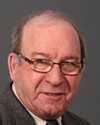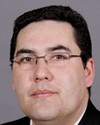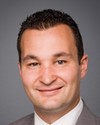Yes, we can generate it very easily.
Evidence of meeting #4 for Indigenous and Northern Affairs in the 39th Parliament, 1st session. (The original version is on Parliament’s site, as are the minutes.) The winning word was data.
Evidence of meeting #4 for Indigenous and Northern Affairs in the 39th Parliament, 1st session. (The original version is on Parliament’s site, as are the minutes.) The winning word was data.
A/Director, Strategic Research and Analysis Directorate, Department of Indian Affairs and Northern Development
Yes, we can generate it very easily.
Liberal

Anita Neville Liberal Winnipeg South Centre, MB
I'd be interested in seeing that, please. Thank you.
Conservative
Bloc

Yvon Lévesque Bloc Abitibi—Baie-James—Nunavik—Eeyou, QC
You mentioned a few moments ago that 30 communities did not participate in the census. Do you have a list of those communities?
A/Director, Strategic Research and Analysis Directorate, Department of Indian Affairs and Northern Development
The lists are public. Statistics on native populations are transmitted to Statistics Canada when they are made public. They are usually available as an appendix in Statistics Canada's publications, as well as on their website.
But we have a copy. So, if ever it's more difficult to...
Conservative

The Chair Conservative Colin Mayes
Do you think related to that...because we might have some answers as the further presentations come forward?
I'll just entertain one more question, and that'll be it.
Liberal

Gary Merasty Liberal Desnethé—Missinippi—Churchill River, SK
Just as a qualifier, Mr. Chair, there are 30 communities, but also multi-communities. The census people sometimes think that having gone to one of those multi-communities they've covered it. So the number is actually higher than 30. I think that's just information we should pass on to the census people, that Peter Ballantyne Cree Nation has seven communities and Lac La Ronge Indian Band has six communities—and La Ronge is not the only community. So I think there is some lack of understanding on that front.
Sorry, that's all.
A/Director, Strategic Research and Analysis Directorate, Department of Indian Affairs and Northern Development
This particular slide illustrates the geographic distribution—again based on the 2001 census.
Very quickly, most of the aboriginal population resides west of the Great Lakes. First nations and Métis are in the western provinces and the Inuit are in the northern regions. The province with the largest aboriginal population is Ontario as of the 2001 census. Things might change with the 2006 census, because provinces display different growth rates of populations, and there's also interprovincial migration, which obviously plays out in how the population distributes over the entire country.
Again, focusing on geography, this time we're looking at the distribution of population on and off reserve. For the off-reserve portion, we distinguish between rural population, urban non-CMA, and urban CMA. CMA means census metropolitan area. Another way of looking at this is that CMA means large city and non-CMA means small city.
So there's great variation in terms of residential distribution across aboriginal groups. For the registered Indian population, while acknowledging some undercounting of the reserve population, about half of the registered Indians live on reserve. For the non-status and Métis populations, 70% are in cities. For the Inuit, it's about 70% again, but in northern rural communities. For the non-aboriginal population, or other Canadians, about 60% live in large cities. So there are quite significant differences here in terms of where people live.
It is interesting and important when one starts highlighting results from the census, or any data sources, especially when one uses a national picture, because if I'm going to give an average for the education of other Canadians and then for registered Indians, these two populations live in quite different circumstances, so I'm often going to be comparing apples and oranges, to use an overused expression. There's a need to really break down geographically the analysis and data to understand the differences and disparities across the country between aboriginal group, and even amongst aboriginal groups. That's a point I wanted to make here.
Liberal

Gary Merasty Liberal Desnethé—Missinippi—Churchill River, SK
I have to apologize, because in my previous life I was accused of being overly focused on statistics to make some arguments and advancements.
Now, on this Canada slide, aboriginal population in Saskatchewan is showing 130,000. Yet when we look at the registered Indian population put together by the membership clerks and held on the Indian registry, that's almost the entire number. So the true demographic reality of Saskatchewan is about 200,000 aboriginal people. There are more than 100,000 status Indian people there. It's commonly accepted with Indian Affairs in the region that there are approximately a little over 100,000. That leaves maybe only 20,000 or 25,000 Métis--that's not true as well--and other categories of aboriginal people.
The point is that these numbers are, I think, under-representing the actual. Again, perhaps it's because of the census problems, although improvements have been made.
On the next slide, I think the on-reserve population in the registered Indian population is much higher as well. The previous statement was that 30 aboriginal communities were missed, all of them first nations, plus the multi-community ones, which raises the number. The percentage, in my opinion, would be much higher than 50. There have been statements made politically about the on- and off-reserve population, and there has to be a better understanding of that population.
Conservative

Rod Bruinooge Conservative Winnipeg South, MB
Perhaps we could allow Eric to complete his presentation and then proceed with some questions.
Conservative

The Chair Conservative Colin Mayes
He requested that any questions that came up be asked during his presentation so that he didn't have to backtrack.
Let's move along now and see how we do. You can limit your questions, unless you feel they're very significant.
Thank you.
A/Director, Strategic Research and Analysis Directorate, Department of Indian Affairs and Northern Development
The next slide gives you an idea of the distribution of first nations reserves--it's again based on census data according to population size, all the reserves according to census geography, and how they distribute according to their size. Seventy-five percent of first nations reserves have fewer than 500 inhabitants--so we're dealing with really small communities--and well above 300 of them have fewer than 100 residents.
The second topic of this presentation: population growth. On this particular slide we have two pieces of information. Let's first focus on that blue line. What is this blue line? It's the evolution of population size as illustrated by the census. I recognize there are issues of undercounting and qualitative data, but these issues tend to be constant over time and will not necessarily distort the shape of the curve, which I'm interested in here. It's based on ancestry data, the only data we can have an outlook of 100 years.
So what does this graph tell us? At the start of the previous century, around 130,000 individuals reported aboriginal ancestry; in 2001, 1.3 million, ten times the population of 100 years ago. Now 100 years can be broken down into three distinct periods of demographic growth: one of slow growth, 1901-1941; one of rapid growth--it doesn't seem so rapid here, but I can tell you it is--from 1941 to 1971; and then 1971 on, and that's an explosion. The curve is looking at the ceiling right now, and it's going up fast.
If I compare it to Canada overall, in terms of overall growth for those 30 years, 1971-2001, Canada increased by 37%, again based on census data: the aboriginal ancestry population increased more than 300%--that's eight times the rate.
So this is very important. Definition is an important aspect of our work, and also an important aspect for people who do work in programming and policy development, but population growth is also an extremely important aspect; it's an important driver. For those who have read David Foot's Boom, Bust and Echo, 60% is explained by demography. Well, that's a lot of demography.
Moving on to the next slide, growth again, I'm focusing only on the last 15 years of the 100 years I just showed you. Now we're talking about data. Each bar represents an annual growth rate for a five-year period--each bar--so we have it for each group, registered Indian, non-status, Métis, Inuit. For example, the bar on the far left, the red one, for the registered Indian, indicates an annual growth rate of about 6.5% during the period 1986 to 1991. That's what each bar means. If I look at the entire chart, these growth rates vary a lot from group to group, from period to period, significantly.
What's that blue line across that I just put there? It's a reference for you to better appreciate how exceptionally high these growth rates are. This is what I call the maximum natural increase.
At the national level--forget about migration from the outside that would contribute to the growth of the aboriginal population--there's nobody coming from the outside, or very few, so the only way this population should be growing is through births, and then minus deaths: that's what natural increase is, births minus deaths--the theoretical maximum that the population can display is 5.5% a year. That's why you see that bar across at 5.5% a year.
What does that mean, 5.5% a year? It means 10 kids per woman. That's impossible right now--in first nations, Métis, or the Inuit population. That's not what we're seeing.
Just to illustrate, we see rates that are in excess of that 5.5% a year for the registered Indian, for example, in the first period, likewise for non-status Indians, and for the last two periods for the Métis. Another way of illustrating how extraordinary this growth is would be to say at 5.5% a year, the population would double every 13 years. At 5.5% a year, over 100 years that population would be 200 times its initial size. That's unsustainable, by the way; it won't last.
Just to illustrate again how extraordinary the growth has been for some of these populations, for some periods, I want to point out that for the Métis population, the rates are really high--they're higher and higher--from one period to the next. I'm looking forward to the 2006 data to see if it's still on the rise.
I just said earlier that it's a good idea to break it down by geography sometimes, because the national picture hides a lot of disparities. Here I've broken it down by reserve, off-reserve rural, and off-reserve urban. Again, these are annual growth rates--the same as the previous slides. What do we see? Where's the demographic explosion? It's off reserve and it's primarily in urban areas.
What are the components of this growth? Well, there are four.
The first one is the national increase, which I've already spoken to. In reality, the fertility rate for first nations women is around 2 to 2.5 children per woman. The Inuit would be around four. The Métis and non-status would be probably around two or a little below. That doesn't explain the growth rates we've seen.
So, yes, the national increase contributes to the growth of the populations, and we've seen it on the pyramid. There are a lot of kids. But that's not the only explanation.
Now, when I talk to colleagues who are not really versed in aboriginal research, they say, “What about migration?” Well, nationally, obviously, that's not a component. Subnationally, the provinces, territories, cities--it might be a component. But it's not. It's not a big driver.
In fact, when it comes time to explain urban aboriginal growth, migration is a myth. When you look at census data, there are questions on migration, where you were living five years ago, so you can have an idea of migration--to and from. Reserves have more individuals going to them than leaving.
The blue bubble that you see on the screen and in your printed decks indicates almost plus 11,000. That means there are 11,000 more people who moved to the reserve than left. As a consequence, you have people leaving the rural off-reserve area going back to the community, or leaving the city--3,000--going back to the community. So this mass exodus is a myth.
The urban areas have been losing population to migration since 1986. I have colleagues that have far more experience than me in looking at this. If I remember well, it goes back to the seventies. The reserves have always displayed a positive net migration--always. There are always more people coming than leaving.
It's important to emphasize that point here, because when people start thinking about designing policies and programs for aboriginals and they think these folks are coming from Indian reserves, it biases how they approach these individuals.
It sets their minds, in terms of what their characteristics are and what the issues are. That could affect policy development significantly.
Bloc

Marc Lemay Bloc Abitibi—Témiscamingue, QC
On this graph, it says “Off Reserve - Rural” and “Off Reserve - Urban”. Am I to understand that these populations have migrated back to a reserve?
A/Director, Strategic Research and Analysis Directorate, Department of Indian Affairs and Northern Development
The figure you see — I apologize for the rather technical term — indicates the net migratory threshold in these areas. So, if you look at the migratory exchanges in off-reserve rural areas, which involves calculating the number of out-drifters and in-drifters, you end up with a net loss of 7,665 individuals.
A/Director, Strategic Research and Analysis Directorate, Department of Indian Affairs and Northern Development
This was measured over five years, so for the period from 1996 to 2001.
You have just made an excellent observation. I've just realized that I forgot to include the reference period. Thank you.
Bloc

Marc Lemay Bloc Abitibi—Témiscamingue, QC
So, if I understand what you're telling me, since 1996, the expressions “Off-Reserve - Rural” and “Off-Reserve - Urban” represent Indians — I don't like that word — who leave urban or rural areas to go back on reserve. Is that correct?
A/Director, Strategic Research and Analysis Directorate, Department of Indian Affairs and Northern Development
In fact, there are movements to and from reserves. When I tabulated all my results with regard to people moving onto reserves and those leaving reserves, the result, for rural areas, was a net loss of 7,000 individuals. However, there are many more migrants than I indicated. This represents the result of all movements.
If you are interested in the volume of migrants, that is, in the number of people who move, I can provide you with that information. Of course, those numbers are much higher. Indeed, the issue of frequent movements by native people, in particular in urban areas or between urban areas, is a whole matter onto itself.
Bloc

Marc Lemay Bloc Abitibi—Témiscamingue, QC
In my opinion, this is very important. I will formulate a hypothesis. You can leave Montreal and go to Quebec City or to Toronto, but not necessarily to Kahnawake or Kanesatake, right?
A/Director, Strategic Research and Analysis Directorate, Department of Indian Affairs and Northern Development
Not necessarily, but I don't exclude that possibility. In fact, the majority of movements take place off-reserve. And there is a lot of movement.
Bloc

Marc Lemay Bloc Abitibi—Témiscamingue, QC
So then, why are you telling me that there are over 10,000 individuals on reserves?
A/Director, Strategic Research and Analysis Directorate, Department of Indian Affairs and Northern Development
The on-reserve population has indeed increased by 10,000 individuals because of the number of people coming to and leaving reserves.